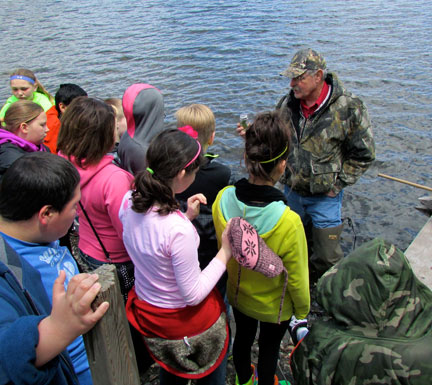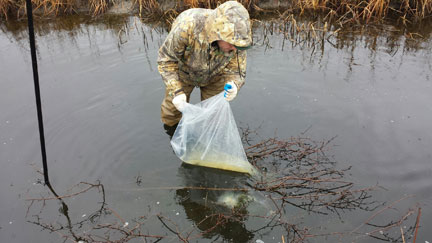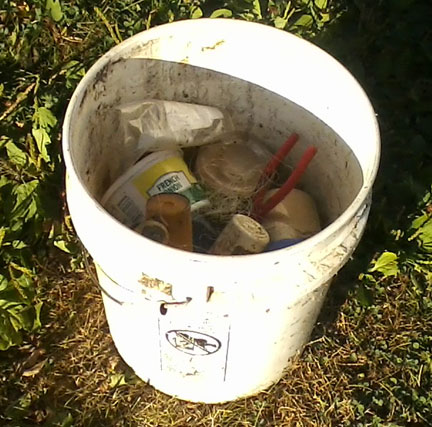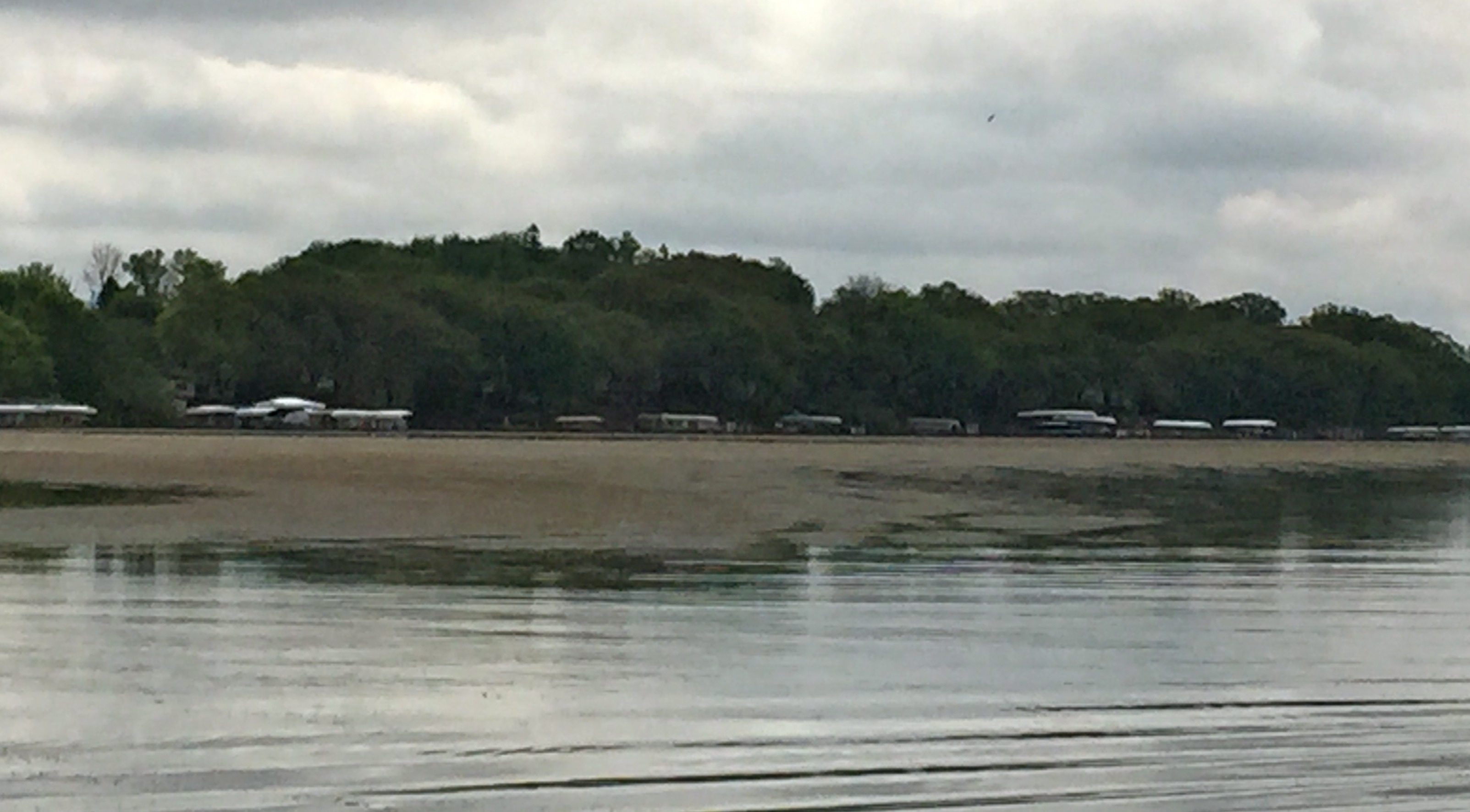By Steve Weisman
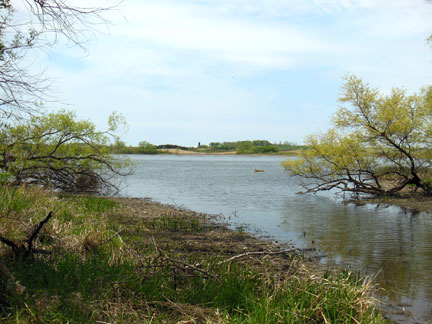
(photo by Chris LaRue, DNR Wildlife Management Biologist): From the construction site looking out into West Hottes Lake.
Nearly 40 area residents attended the update on the restoration project on Marble and West Hottes Lakes last Tuesday, May 20 at Mini-Wakan State Park Shelter House. Sponsored by the Spirit Lake Protective Association, the Iowa Department of Natural Resources and members of the Dickinson County Clean Water Alliance, the evening was highlighted by a power point presentation by Mike Hawkins, northwest Iowa Fisheries Biologist. He discussed the significance of the project presenting historical data of the two lakes and their water quality prior to European settlement days followed by what has happened post-settlement.
Hawkins elaborated on the importance of this by saying “The Big Spirit Lake watershed is huge with over 45,000 total acres draining into Big Spirit Lake. The Marble/Hottes Lake and its associate watershed accounts for nearly 20 percent of that watershed. When these two lakes are in a healthy state, they provide critical watershed protection for Big Spirit.”
In their present degraded condition, they do not have the capability or capacity to do this. Hence, the Marble and Hottes Lakes Restoration project. With a goal to return them to healthy, vibrant shallow water lakes, they will once again become an important nursery area for fish, provide wildlife habitat, and filter the water coming from the watershed to Big Spirit Lake.
Chris LaRue, DNR Wildlife Management Biologist and one of the leaders of the project, told the group that the survey and design phases of the project are complete and construction is scheduled to begin this summer. “Of course, it all depends on Mother Nature,” said LaRue. “If things go the way we hope, construction will be completed by early 2015.” The renovation plan includes a drawdown, which will stimulate plant growth, eliminate common carp, and compact bottom sediments. It is hoped that stands of bulrushes will become part of the new plant growth. The drawdown phase will last beyond construction as it takes at least one growing season to establish aquatic plants. The DNR estimates that if conditions are right, the lakes will be back to full pool by 2016.
LaRue noted that the Diamond Lake project, which was completed in 2009, is very similar to the Marble and Hottes Lakes Restoration project. It was Ducks Unlimited’s inaugural Living Lakes project in Iowa and set the bar, so to speak, for other shallow water lake restorations.
Realizing the importance of this restoration project several partners have stepped forward to help either help out or contribute funding:
- Iowa DNR (Fisheries and Wildlife Bureaus, Lake Restoration Program and Watershed Improvement Section)
- Ducks Unlimited
- North American Wetlands Conservation Act
- Dickinson County Water Quality Commission
- Spirit Lake Protection Association
- Iowa Department of Agriculture, Land Stewardship
- Natural Resources Conservation Service
The project itself is really only the first step. Once completed, the infrastructure
will be in place to ensure proper in-lake management as future needs develop. One of the key requirements will be the need to control the movement of water and common carp in and out of Marble Lake and the Hottes lakes. As a result, infrastructure placed near these lakes’ outlets will allow managers to control both water and common carp movement.
These structures will also allow DNR personnel to be able to initiate periodic drawdowns to help promote diverse vegetation that will help keep water clean and clear, while at the same time benefit fisheries and wildlife interests. It is important to note that while the fish barriers are designed to keep adult reproductive carp out of East and West Hottes and Marble, they will still allow panfish to enter to take advantage of the excellent spawning habitat that will result from the project.
When the Marble-Hottes project is completed, we will have another piece of the puzzle in place that addresses the Iowa Great Lakes watershed. With one third of the Iowa Great Lakes watershed (approximately 30,000 acres) located in southern Minnesota (to Interstate 90), plans are in the works to form a partnership with entities in Minnesota to address these watershed issues.
The bottom line in this entire watershed issue is this: the Iowa Great Lakes can’t be protected and healthy unless the shallow lakes and wetlands flowing into them are healthy.

